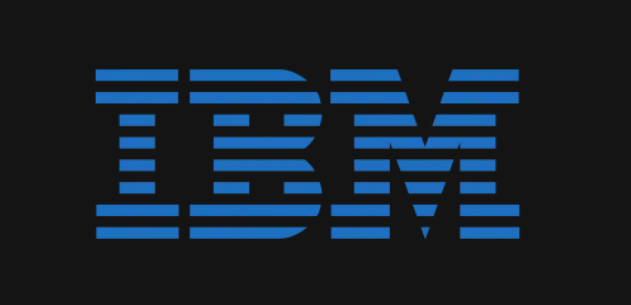Insider Brief
- A Japanese research team demonstrated that a quantum algorithm can solve a core metabolic-modeling problem, marking one of the earliest applications of quantum computing to a biological system.
- The study shows that quantum interior-point methods can reproduce classical results for key cellular pathways, suggesting a potential route to accelerate metabolic simulations as models scale to whole cells or microbial communities.
- While still limited to simulations, the approach outlines how early fault-tolerant quantum machines might help analyze large biological networks that strain classical computing.
- Photo by TheDigitalArtist on Pixabay
A team of Japanese researchers reported that a quantum algorithm could help solve a core problem in metabolic modeling, marking one of the first attempts to apply quantum computing to a biological system. The team’s findings also suggest how future machines could tackle complex questions in cell behavior.
In the study, posted to the preprint server bioRxiv, the Keio University researchers adapted a type of mathematical optimization tool — long used to predict how cells use nutrients and generate energy — for a quantum computer.
The work applies quantum interior-point methods to flux balance analysis. What this means in simple terms is the researchers showed how a quantum computer could help map how a cell uses its energy and resources. It’s the biological equivalent of tracking traffic flow through a city’s busiest streets.

By doing this, the researchers outline a possible route for quantum computers to accelerate a class of problems that are expected to overwhelm classical machines as models grow to the size of whole cells or communities of microbes.
According to the study, this quantum approach successfully recovered the correct solution for a test case built around glycolysis and the tricarboxylic acid cycle, two fundamental pathways of cellular energy metabolism. While the demonstration ran on a simulator rather than physical hardware, the model followed the structure of quantum machines expected in the first wave of fault-tolerant systems.
The result adds a new area to the growing list of scientific fields that researchers believe could benefit from quantum acceleration once hardware matures. It also justifies the early movement toward quantum computational biology, a field that has generated significant interest but has relatively few end-to-end algorithmic demonstrations.
A Computational Bottleneck in Biology
Flux balance analysis is widely used in systems biology to estimate how a cell moves material through metabolic pathways. Instead of tracking every chemical interaction in detail, the method treats the cell as a network of reactions constrained by the laws of mass balance. The goal is to find a set of reaction rates, known as fluxes, that satisfy those constraints while maximizing a biological objective such as growth, ATP production or nutrient uptake.
Classical tools can solve flux balance analysis efficiently for many networks. But as models expand to include thousands of reactions, which would likely be the typical size for genome-scale reconstructions, or shift from steady-state conditions to dynamic simulations, the computational demands rise sharply. Large versions of the problem require repeatedly solving systems of linear equations whose size and complexity can grow beyond the capacity of current computers.
The team suggests that quantum devices may offer an advantage for these larger cases because they can represent and manipulate high-dimensional information more efficiently. The study uses quantum singular value transformation, a technique for creating a quantum circuit that approximates the inverse of a matrix. Matrix inversion is typically the most time-consuming step of interior-point methods, which is the family of optimization tools used to solve flux balance analysis.
According to the study, the researchers converted the metabolic model into a form suitable for quantum processing, prepared the input as a quantum state and applied a quantum routine designed to reflect the structure of the biological constraints. The team reports that the quantum method converged to the same solution obtained using classical calculations, demonstrating validation on a simplified but biologically meaningful network. The demonstration shows that the algorithm can follow the “central path” of the optimization problem, the route that interior-point methods normally trace.
How the Quantum Method Works
Interior-point methods solve linear optimization problems by gradually moving through the interior of a geometric space defined by constraints until they reach an optimal point at the boundary. Each step requires solving a system of equations that incorporates the structure of the original problem and the so-called barrier term that keeps the solution within the feasible region.
The study adapts this process for a quantum setting by block-encoding the matrices — a technique that embeds a matrix, which you can think of as a giant spreadsheet that describes the biological system in question, inside a larger unitary operation so that the quantum computer can work with it — and then applying the polynomial transformations needed for inversion. Inversion is simply a way of looking at the outputs to find the cause, or causes.
The researchers also introduce a null-space projection to reduce the condition number of the matrix. The condition number governs the stability and accuracy of matrix inversion and typically becomes very large as the solution approaches the optimum. The study says the null-space projection greatly reduces this value, improving the chance that a quantum linear solver can operate reliably.
The simulation used only six qubits, a small number reflecting the reduced matrix required after projection. The researchers note that the method was tested with exact state-vector simulation, which provides ideal results that real hardware cannot yet replicate. However, the operations described — state preparation, block-encoding and quantum singular value transformation — are expected to fall within the capabilities of early fault-tolerant systems.
Implications for Biological Research
If quantum devices can eventually scale to support large, stable versions of the method, metabolic modeling could become one of the earliest biological applications. Genome-scale networks, multi-species microbial communities and dynamic systems driven by differential equations all involve extremely large and sparse matrices. These models are crucial for identifying metabolic bottlenecks, designing engineered microbes, investigating disease states and simulating biological responses to environmental conditions.
Classical solvers can handle many of these tasks but struggle with combinatorial growth in model size, time resolution or environmental conditions. The study notes that the real opportunity for quantum acceleration lies in moving beyond steady-state assumptions into models where metabolite concentrations change over time. Those dynamic versions, sometimes called dynamic flux balance analysis, can become intractable when they require hundreds or thousands of sequential optimization steps.
The authors also point to potential uses in microbiome research. Community metabolism involves multiple interacting organisms exchanging chemical signals and nutrients, producing networks much larger than a single-species model. Each additional species compounds the computational demands, making quantum methods attractive if they can reduce total runtime.
The study suggests that quantum approaches could one day help researchers explore metabolic design spaces more comprehensively, identifying alternate pathways, simulating regulatory responses or spotting unusual flux patterns that might reveal disease markers or engineering opportunities.
Practically — and noting that the research is in its preliminary stage — these quantum methods could eventually handle full-scale biological networks, helping researchers find treatments for everything from cancer to Alzheimer’s to infectious diseases.
Limitations of the Current Work
The study acknowledges that hurdles and challenges remain. For example, the demonstration uses a small model that is orders of magnitude smaller than real genome-scale networks. The algorithm’s performance depends heavily on the condition number of the matrices, which may rise sharply in larger models. Even with the null-space projection, the condition number can grow as the optimization proceeds, potentially overwhelming the precision of quantum singular value transformation.
Another limitation is that the simulation is idealized. Real hardware suffers from noise and limited circuit depth. The study positions the method for early fault-tolerant systems, not current noisy devices. Even in future machines, preparing the required states and encoding large matrices may introduce overhead that reduces or cancels the speed gains.
Finally, the approach requires converting classical data — such as the stoichiometric matrix — into quantum form, a process sometimes called data loading. Efficient data loading remains an open question in quantum computing. Without practical methods for moving large datasets into quantum memory, many theoretical speedups may be difficult to realize in practice.
Future Directions
The researchers outline several paths for further study. Larger networks will require testing the stability of the method, including how the condition number behaves for full genome-scale systems. The team also indicates that improved quantum linear solvers, including new techniques that reduce the dependence on the condition number, may offer better performance for biological problems.
Dynamic models represent another new path for research. These simulations track metabolite pools as they change over time, linking metabolic fluxes to time-dependent behavior. Incorporating differential equations into a quantum framework would require solving a different class of mathematical problems, but could give a more realistic picture of cellular adaptation.
Community modeling — where multiple interacting microbes compete or cooperate — is one of the most computationally demanding domains. The study suggests that quantum acceleration may make these larger systems accessible, although the associated computational workload remains far beyond today’s quantum hardware.
Ultimately, the researchers suggest that the demonstration could provide researchers with a foundation for quantum computational biology by showing a fully realized pipeline from a biological network to a quantum simulation to a validated solution.
For a deeper, more technical dive, please review the paper on bioRxiv. It’s important to note that bioRxiv is a pre-print server, which allows researchers to receive quick feedback on their work. However, it is not — nor is this article, itself — official peer-review publications. Peer-review is an important step in the scientific process to verify results.


















